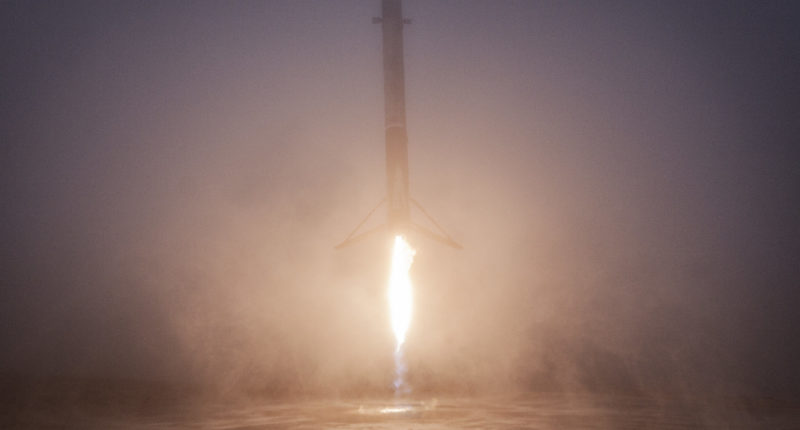SpaceX is continuing to create new benchmarks in space tech. The company has now successfully caught half fairing of Falcon Heavy rocket in the net of a boat! This is the first time the company had a success in retrieving a fairing (also known as nosecone) of Falcon Heavy. All its previous attempts had failed. This is also a first, like many other, for any space company/organisation.
As a part of its STP-2 mission, SpaceX had launched the Falcon Heavy rocket from Kennedy Space Center in Florida on Monday. It was the SpaceX’s first night launch as well as first time it launched the rocket with flight-prove boosters. And now, SpaceX has registered another record first to this list.
The plan basically involved a boat owned by SpaceX named “Ms. Tree” (earlier “Mr. Steven”) fitted with a giant net across four large protruding beams. This boat was stationed off the Florida coast in the Atlantic Ocean ready to catch the nosecone once it detaches from the rocket. The same boat, earlier this year, attempted at catching SpaceX rockets launched from Florida.
On February 2017, SpaceX put the boat to service from Vandenberg but it missed its target. It tried again three more time in 2018 during which it employed larger nets to have a better chance at catching the fairing.
A nosecone is the topmost part of a rocket and its primary goal is to minimize the air drag. It also protects the payload.
Every launch involves two nosecones, one for each payload capsule. SpaceX engineered them with thrusters and parachute for a steady descent. This provided greater control over the nosecones. These modifications were included during SES-10 mission in 2017. But until now they’ve dropped these nosecones in oceans which made the process of retrieving and refurbishing these components difficult.
SpaceX CEO Elon Musk said that the company is basically throwing away $6 million every time it loses one of these fairings to a hard ocean landing. The company puts a lot of emphasis on re-usability of rocket components and it has already reused the rocket boosters numerous times. Now, with this new feat, it can re-use fairings too, which would be a great leap towards economical viability for the company. Things that budgeting can you push you to do!
The next step for SpaceX involves checking whether it is possible to refurbish the retrieved fairing. If yes, then it would help SpaceX reduce launch costs in the future and will be a definite game-changer.
SpaceX’s yet another example of re-usable rocket parts demonstrates how costs can be significantly reduced, if this tech were to become mainstream. But then why are the world’s biggest government-backed space agencies unable to achieve this ? Well, answer lies in the question I guess. With massive government funding (which btw is taxpayers’ money), such need hasn’t really been thought of on priority. SpaceX and Musk’s obsession with low cost space travel has resulted in such amazing feats. Necessity is the mother of invention after all!
The Tech Portal is published by Blue Box Media Private Limited. Our investors have no influence over our reporting. Read our full Ownership and Funding Disclosure →






